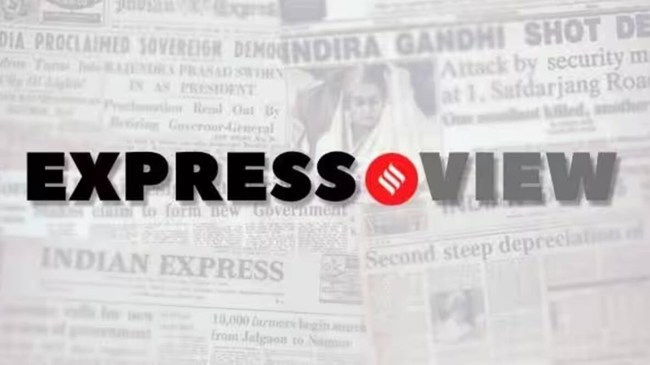Opinion Declining poverty, and the data that shows it
Extreme poverty in India is estimated to have declined from 27.1 per cent in 2011-12 to 5.3 per cent in 2022-23 as per latest World Bank data. Data must serve as a valuable input for policy
 Extreme poverty in India is estimated to have declined from 27.1 per cent in 2011-12 to 5.3 per cent in 2022-23 as per the latest World Bank data reported in this paper.
Extreme poverty in India is estimated to have declined from 27.1 per cent in 2011-12 to 5.3 per cent in 2022-23 as per the latest World Bank data reported in this paper. Poverty and inequality estimation in India have been subjects of considerable debate, especially in recent years with the economy experiencing several shocks. The great India poverty debate has, in fact, been marked by significant differences of opinion on the household survey data which forms the basis of estimation, the construction of the poverty lines, and on the trends over the decades. The debate has been particularly heated in the absence of data — the government did not release the consumption expenditure survey data for 2017-18 due to “data quality issues”. This led to several studies trying to estimate poverty levels in India by drawing on alternate data sources such as the Periodic Labour Force Surveys and the CMIE data. Recently, the government has attempted to fill the data gap by conducting two rounds of household consumption expenditure surveys for 2022-23 and 2023-24. These surveys now allow for an examination of the trends in poverty over the past decade or so. The decline has been significant.
Extreme poverty in India is estimated to have declined from 27.1 per cent in 2011-12 to 5.3 per cent in 2022-23 as per the latest World Bank data reported in this paper. This steep decline has occurred even as the Bank has raised the threshold for measuring extreme poverty to $3 a day from $2.15 earlier. To put these figures in perspective — the number of people living in extreme poverty in India fell from 344.47 million to 75.24 million over this period. While there has been some concern over the comparability of the consumption expenditure surveys carried out in 2011-12 and 2022-23 due to changes in the manner in which the recent survey was carried out and its sampling design, this is a steep decline. Moreover, even considering the poverty line for lower-middle income countries of $4.2 per day (revised upwards from $3.65), the poverty ratio in India fell from 57.7 per cent in 2011-12 to 23.9 per cent in 2022-23. The decline appears to have continued in the year thereafter. Earlier, Niti Aayog had estimated that multidimensional poverty in India had also registered a steep decline — falling from 55.34 per cent in 2005-06 to 24.85 per cent in 2015-16 to 14.96 per cent in 2019-21. This estimate of poverty was based on 12 indicators and drew on data from the National Family Healthy Surveys.
Alongside these poverty estimates, the World Bank has also estimated that inequality in India, based on measures such as the Gini and Theil indices, did fall between 2011 and 2022. However, these estimates of inequality are based on the household consumption expenditure data, which typically tends to be lower than estimates based on household income. This is not just an academic exercise. The data from the latest rounds of the consumption expenditure surveys as well as the labour force surveys must serve as a valuable input for policy, informing the choices of policymakers.






